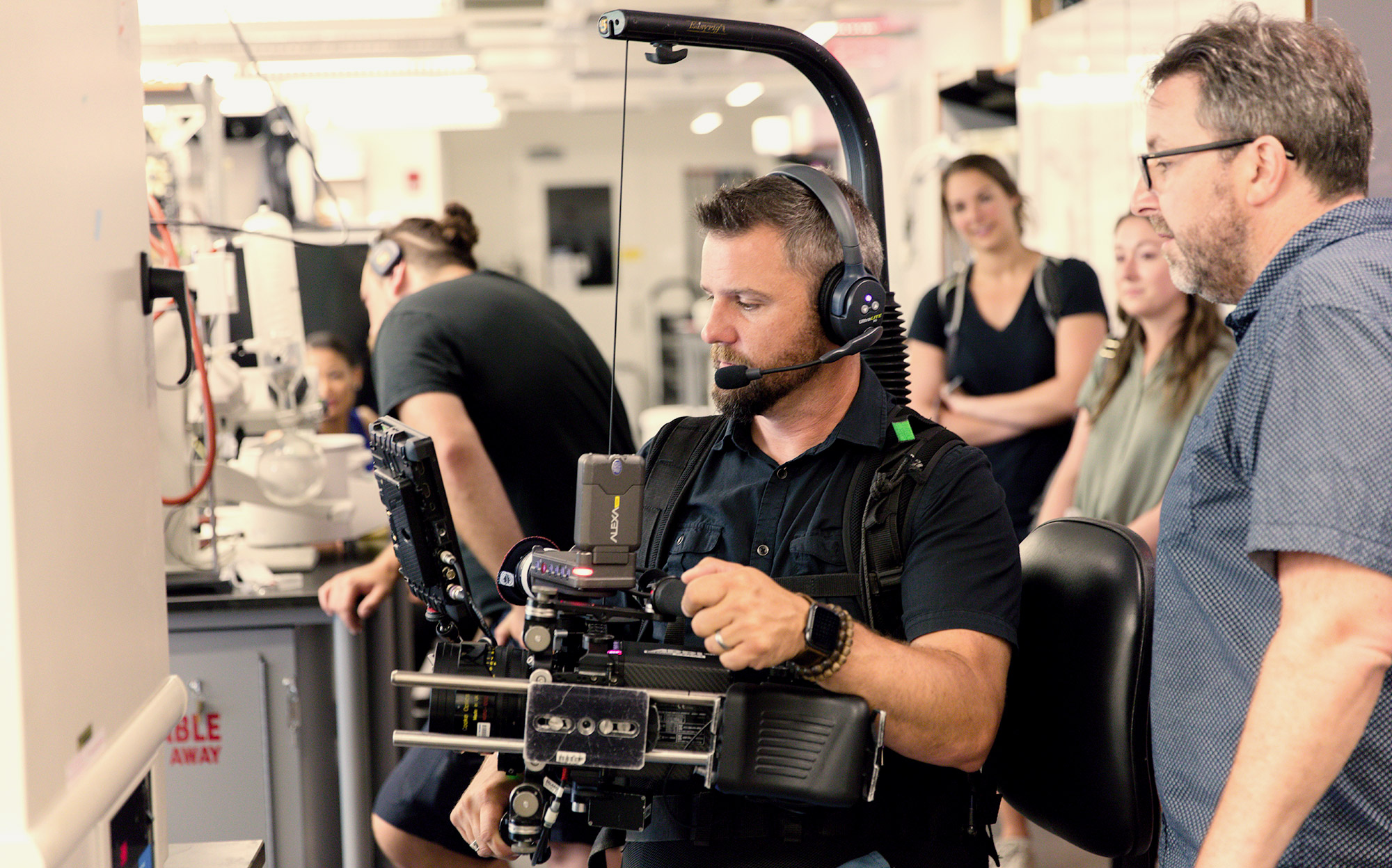On this page
What is Active Learning?
To understand what active learning is and how it works, it’s helpful to compare it to traditional teaching strategies.
Your memory of classes may well be sitting in a seat, listening to a lecture while you take notes. This model, where the learner acts as a vessel waiting to be filled with information by a teacher, is passive learning.
In contrast, a teacher using active learning methods might lay the groundwork for a discussion before opening it up to the class for debate. They might bolster their teachings with small group activities or use online discussion boards to let students work out ideas with each other.
Active learning is an instructional method in which the teacher engages the learner in the material through discussion, problem-solving, and hands-on skill-building.
If traditional learning is learning by listening (or reading), active learning is learning by doing.
What does this look like?
Huntington Lambert, former dean of Harvard’s Division of Continuing Education, gives an example from one of his business courses: “I can choose to lecture on the elements of a business model canvas. Or I can choose instead to help the students learn by doing,” he says.
“In the latter scenario, I’m merely the facilitator as the students build a business model canvas. That’s active learning.”
Learn More, Faster
Research shows that active learning models result in deeper learning for students.
In fact, a recent Harvard study suggests that students actually retain more information from active learning strategies. This is true even when they believe that they learn more from a traditional lecture approach.
Tom Nichols, a Harvard Extension School instructor, saw this firsthand when teaching a course on nuclear crises simulation.
“Students can’t grasp the intense emotions involved in an international crisis when they just read about it. They learn more if they experience the actual sense of anxiety created by making immensely important decisions in conditions of shortened time and little information,” he says.
Though active learning is valuable for all students, the super-charged model is particularly beneficial for part-time adult learners. It maximizes in-class time and reinforces teachings, a requirement for those juggling careers, families, and school.
Additionally, research shows that active learning strategies lead to greater retention, improved grades, increased engagement, and lifelong learning among adults.
In short, struggling to actively solve problems promotes a growth-mindset that reaps benefits long after class is over.
Blending Active Learning and Online Classes
Not every course can use active-learning strategies. But certain subjects incorporate the model more often, says Lambert.
Concentrations like information technology, biology, and even management are great candidates for the active learning approach.
Harvard professor Harry Lewis uses active-learning techniques in his online Harvard Extension course on discrete mathematics. The course is based on his on-campus course, where students sit in small groups and work together to solve problems—a critical skill for hopeful engineers and developers.
The online course groups students into virtual tables. Teaching assistants then ‘drop by’ these virtual tables to help students get over various humps and evaluate their solutions.
Online classes use ever-evolving tech to bring active learning into the homes of students. Class discussion boards allow students to ask and answer each other’s questions.
Mind mapping and brainstorming apps provide a way for learners to generate possible solutions, choose the best, and work together to solve the problem.
More adventurous instructors may also use gamification to turn mastering a certain concept into a game, incorporating competition, achievements, and of course, fun.
What to Expect and How to Prepare for Active Learning
If you’ve been out of school for some time, just returning to academic pursuits can feel daunting without the additional uncertainty of adjusting to new teaching methods.
Have no fear. With a little preparation, you’ll see the rewards of active learning in no time. You’ll likely discover that these new learning strategies make classes much more exciting and engaging than the lectures you remember.
To get the most out of active learning based online courses:
Make room in your schedule and space for learning.
While online learning offers some flexibility, it is still a time-intensive pursuit. Make sure you have the hours and energy available to dedicate to any particular class.
Likewise, though you may be able to participate in traditional online courses from a crowded coffee shop, or in the break room at work, active learning classes require quiet, private space. You’ll need a place where you can speak freely and avoid distractions.
Expect to be challenged.
Active learning strategies are hands-on. Instead of reading and lecturing, expect classes to be centered around solving problems in real-world situations. The solution may not be obvious, which can be frustrating, but remember, the struggle is where the growth happens.
Keep an open mind.
Though online learning doesn’t bring people together in a physical space, you will still be interacting with other students in your class. Some of these connections will be wonderful, and some, perhaps, not so much.
Keep an open mind about the people you encounter in your classes, understanding that many different backgrounds and life circumstances are likely to be represented.
Get comfortable with public speaking.
Active learning requires active participation. You’ll likely end up in the hot seat occasionally—asked to contribute your ideas and defend your answers.
Classrooms, both virtual and physical, are safe spaces to share and learn. But speaking in front of many people, even if you can’t see them, can be intimidating. If public speaking causes you anxiety, work on strategies to build your confidence before class.
Experience Active Learning Firsthand
Thanks to advancements in technology, such as video conferencing and virtual classrooms, it is now possible for distance students to collaborate with others and solve problems in real time.
Instead of the traditional online approach composed entirely of reading, video lectures, and emailed assignments, active online learning allows students to dig in and learn skills in a real-world context while making connections with other students from across the globe.
Quality online courses that utilize active learning methods may provide the best of both worlds for working adults who choose to return to school: the collaborative, real-world skill-building of a classroom and the convenience of participating from just about anywhere.

